DOH Medicaid Update May 2003 Vol.18, No.5
Office of Medicaid Management
DOH Medicaid Update
May 2003 Vol.18, No.5
State of New York
George E. Pataki, Governor
Department of Health
Antonia C. Novello, M.D., M.P.H., Dr. P.H.
Commissioner
Medicaid Update
is a monthly publication of the
New York State Department of Health,
Office of Medicaid Management,
14th Floor, Room 1466,
Corning Tower, Albany,
New York 12237
Table of Contents
Point Of Service Device Users
New Option For Receiving The Medicaid Update
Share Your Success Stories
Diabetes Tools: Hyperglycemia & Ketoacidosis
New Screening Recommendations For Diabetes
Coping With Alzheimer's Disease
Mandatory Generic Program Reminders
Reminder Of Claim Requirements For Family Planning Benefit Program
Vaccines For Children & HIPAA
2003 Dental Fee Schedule
Announcing A New Managed Care Special Needs Plan
Change In Reimbursement For Part-Time Clinics
Important Billing Instructions For Article 16 Clinic Providers
Recipient Name Search/Check Amount Inquiry Telephone Number
PROVIDER REMINDER: 1099 FORMS
Computer Sciences Corporation (CSC), as fiscal agent for the Department of Health (DOH), issues 1099 forms to providers at the beginning of each year for the previous year's Medicaid payments. CSC and DOH have been receiving calls from some providers stating that their 1099 amounts are incorrect.If you cannot reconcile your 1099 amount to the total amount of your Medicaid checks with dates within the 2002 calendar year, please note the following:
- Due to the two-week lag between the date of the check and the date when the check is released, the 1099 amount does not correspond to the total of the checks issued during the calendar year. The 1099 amount corresponds to the total of the checks released during the calendar year.
- The payments included in the 1099 issued for the year 2002 correspond to the checks dated from 12/17/01 (released on 01/02/2002) through 12/09/02 (released on 12/26/02).
Additionally, some providers that work for a medical group may have received Medicaid payments due to the group if the claims for those services were submitted without the group ID. Such payments are included in the individual provider's 1099. Providers are reminded that, in order to direct the Medicaid payments to a group, the group ID must be entered in the appropriate field on the claim (paper or electronic). Claims that do not have the group ID will cause payment to go to the individual provider and his/her 1099.
The above information is provided to assist providers with reconciling the 1099 amount. Any questions should be directed to CSC's Provider Relations at the following numbers:
Practitioner Services (800) 522-5518 or (518) 447-9860
Institutional Services (800) 522-1892 or (518) 447-9810
Professional Services (800) 522-5535 or (518) 447-9830
Pharmacies may contact eMedNY Provider Services at (800) 343-9000
HIPAA
NEWS
ATTENTION
POINT OF SERVICE (POS) DEVICE USERS
Return to Table of Contents
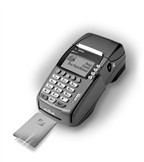
With the implementation of new HIPAA regulations, the POS device you are currently using will become obsolete.
As reported in the April Medicaid Update, due to upcoming software code changes associated with HIPAA, you will be required to replace your VeriFone TRANZ 330 POS device (or switch to an alternate access method) to comply with HIPAA regulations. The NYS Department of Health (DOH) and Computer Sciences Corporation (CSC), fiscal agent for eMedNY contract, have chosen the VeriFone Omni 3750 as the replacement device for the TRANZ 330s.
About the Omni 3750 Deployment Process:
Current users of the TRANZ 330 devices will receive a letter which will give ordering, pricing and detail specifications of the Omni 3750s, and the dates during which these replacement devices must be ordered and received. If these ordering/receiving dates are missed, there is a serious risk of a lapse in service for your access.
In preparation for the HIPAA software code, you will also be notified when the terminal must be downloaded to be HIPAA capable. Until then, the Omni 3750 can be used to access eMedNY just like the TRANZ 330.
The current Medicaid Eligibility Field Software, which is an alternate access method for providers with PCs, will be replaced by a HIPAA capable web-based program called ePACES, which will be communicated in these letters.
The DOH will no longer supply the POS devices free of charge, except to providers who have been mandated and specifically notified by DOH to use the terminal (these providers are still required to follow the instructions in the letter). Approximately 10,000 providers currently utilizing the TRANZ 330 POS device will be affected by this change. If you are one of those providers, please look for this letter.
If you would like more information on this topic, please call Provider Services between 10:00 AM and 2:00 PM Monday through Friday at 800-343-9000, Option 4 (POS Information).
Providers wishing to obtain the latest information concerning the availability of the Omni 3750 should visit the eMedNY website ( http://www.emedny.org).
NEW OPTION FOR RECEIVING THE MEDICAID UPDATE
"It Is Now Available Electronically"
Return to Table of Contents
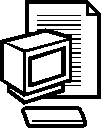

You now have the opportunity to receive the Medicaid Update in your own electronic mailboxes! Effective immediately, you can request all future Medicaid Updates to be emailed directly to you.
The benefits are numerous:
- You will receive the electronic version about three weeks earlier than the mailed hardcopy.
- You will be able to disseminate internally via your own email system, and forward to staff articles that are pertinent to your practice.
- You will have the flexibility to copy, highlight and print articles as needed.
Receive the Medicaid Update electronically and see what a difference it makes. To request the electronic version, just send an email to the Medicaid Update Mailbox at:
Please provide the following information:
- Name
- Medicaid Provider Identification Number
- Email address (or multiple addresses, if desired)
DO YOU RECEIVE MULTIPLE COPIES
OF THE MEDICAID UPDATE?
If you are enrolled in more than one category of service, you are receiving more than one Medicaid Update. We can eliminate this duplicate mailing.
Please mail to us the address page of the duplicate copies of the Medicaid Update to:
Medicaid Update
NYS Department of Health
Office of Medicaid Management
99 Washington Ave., Suite 606
Albany, NY 12210
Or email the list of duplicate numbers to: MedicaidUpdate@health.state.ny.us )
SHARE YOUR SUCCESSES!
Return to Table of Contents
Many of you have shared your experiences related to health care information found in the Medicaid Update. Often these experiences have produced a positive outcome for one of your patients/residents/colleagues or friends. We would like to give you a chance to share these success stories in a new section called Medicaid Success Stories.
One story was told by staff of an adult day health care program, which is a medical program designed to maintain our elders in the community as an alternative to other long term care arrangements. Recently, the New York City-based program read an Update article on diabetes, which recommended a bare foot examination of persons with diabetes. Staff instituted this procedure, and immediately found one client with a severe infection. Quick medical intervention reversed the infection, avoiding a possible amputation of the limb.
This story not only reflects a personal triumph for the program, but avoided unnecessary suffering of one client and significant costs to the Medicaid program. This clearly shows how one person (or a small group of people) can make a difference between ability and disability--in this case, possibly between life and death.
We believe that your care does make a difference in leading to positive health outcomes. Please send any success story you would like to share to:
Medicaid Update
NYS Department of Health
Office of Medicaid Management
99 Washington Ave., Suite 606
Albany, NY 12210
Or telephone Donna or Denise of the Medicaid Program at (518) 474-9219.

PATIENT EDUCATIONAL TOOLS
Return to Table of Contents
The Medicaid Program's Bureau of Program Guidance is now providing educational tools to support the Medicaid disease management program. Medicaid's disease management program is dedicated to partnering with the provider community to promote quality of care in a cost effective and efficient manner. Our goal is to continue to provide educational tools on a routine basis.
This month, the focus is once again on diabetes. The following two pages contain two emergency fact sheets, one on "Hyperglycemia and Ketoacidosis," and the second on "Hypoglycemia."
The Medicaid program encourages practitioners to copy and distribute these materials to their patients and to share them with their colleagues.
Please contact the Medicaid Bureau of Program Guidance at (518) 474-9219 with your comments and suggestions on these and future patient educational tools.
________________________________________________________
HYPERGLYCEMIA and KETOACIDOSIS
"Potentially Life Threatening Conditions"
Return to Table of Contents
Hyperglycemia or high blood sugar occurs when the blood glucose level is higher than 140 mg/dL before meals. Hyperglycemia can become serious if it is not treated and can lead to Ketoacidosis. Understanding the causes of hyperglycemia will prevent complications and ketoacidosis from occurring.
Causes of Hyperglycemia
- Eating more food than planned
- Exercising less than planned
- Illness, even a mild cold or the flu
- Stress, family, school, work, etc
- Not taking enough insulin
Signs & Symptoms of Hyperglycemia
- Dry Mouth
- Extreme Thirst
- Sugar in the Urine
- High Blood Sugar
- Mental Confusion
- Fatigue
- Blurred Vision
- Frequent Urination
- Stomach/Abdominal Pain
- Weight Loss/Vomiting
What You Should Do If You Have Symptoms of Hyperglycemia
**Always Follow the Directions Provided To You By Your Doctor or Medical Provider**
The following recommendations were adapted from the Centers for Disease Control:
Drink 3-5 ounces of non sugared fluid hourly
Continue to take your medications
Test your blood & urine for glucose
Test your urine for ketones
Continue to follow your diet
Walk or do some form of mild exercise
Notify your doctor with your blood and urine results if the situation continues
What is Ketoacidosis?
Ketoacidosis or diabetic coma develops when the body does not have enough insulin to use glucose (sugar) for fuel (energy). Without insulin, the body will break down fats to use for energy. When the body breaks down fats, waste products called ketones are produced. The body cannot tolerate large amounts of ketones and will try to get rid of them in the urine. The body cannot release all the ketones in the urine; as a result they build up in the blood and that can lead to Ketoacidosis.
________________________________________________________
KETOACIDOSIS IS LIFE THREATENING AND NEEDS IMMEDIATE TREATMENT
The Most Common Reason for Ketoacidosis is Forgetting to Take Insulin!
Symptoms of Ketoacidosis Are Life Threatening and Require Immediate Treatment
Shortness of Breath Fruity Breath Nausea & Vomiting
Test Your Urine for Ketones Immediately - Call Your Doctor!
NEVER WAIT FOR A CALL BACK FROM YOUR DOCTOR
CALL FOR EMERGENCY HELP
YOU NEED TO GET TO A HOSPITAL IMMEDIATELY!
DO NOT DRIVE YOURSELF TO THE HOSPITAL
IF POSSIBLE, HAVE SOMEONE WHO KNOWS YOU AND WHAT NEEDS TO BE DONE IN AN EMERGENCY, ACCOMPANY YOU.
BE PREPARED FOR AN EMERGENCY
A FRUITY ODOR TO YOUR BREATH COULD SMELL LIKE ALCOHOL
PEOPLE MAY MISTAKE A DIABETIC WHO IS IN KETOACIDOSIS AS AN ALCOHOLIC
________________________________________________________
Always Wear a Medical Identification Device and Carry a Card That States You Have Diabetes
Carry a List of Your Medications and Dosages and What To Do in Case of an Emergency
Source: CDC, "Take Charge of Your Diabetes", 2nd edition, 1997 pps.24-30. The American Diabetes Association website, http: www.diabetes.org
Prepared by the NYSDOH, Office of Medicaid Management, Bureau of Program Guidance, 5/03
HYPOGLYCEMIA
"Potentially Life Threatening Condition"
Hypoglycemia or low blood sugar occurs when the blood glucose level is lower than 70 mg/dL. Hypoglycemia can become serious if it is not treated and you may have seizures or lose consciousness. It is important to understand the causes of Hypoglycemia in order to prevent complications.
Causes of Hypoglycemia
- Eating less food than usual, and still taking the normal amount of insulin or diabetic medication.
- More activity or exercise than usual, without eating extra food prior to the exercise.
- Giving yourself too much insulin or taking more diabetic medication than is normal on a typical day.
- Drinking alcoholic beverages or other substances that cause your blood sugar to drop.
Signs & Symptoms of Hypoglycemia
- Shakiness
- Dizziness
- Sweating
- Fatigue
- Hunger
- Headache
- Pale skin color
- Sudden moodiness
- Behavioral changes
- Difficulty paying attention
- Confusion
- Clumsy or jerky movements
- Tingling sensations around the mouth
- Loss of consciousness
What You Should Do If You Have Symptoms of Hypoglycemia
**Always Follow the Directions Provided To You by Your Doctor or Medical Provider**
The following recommendations were adapted from the Centers of Disease Control:
- Test your blood sugar right away, if less than 60 to 70 mg/dL you need to eat 10 - 15 grams of carbohydrates IMMEDIATELY!
Examples of 10 - 15 grams of carbohydrates:
2-3 teaspoons (packets sugar)
½ cup or 4 ounces fruit juice
3-5 pieces of hard candy
½ cup or 4 ounces of soda NOT DIET SODA
2-3 glucose tablets - If you feel like your blood sugar is getting low, but you cannot test right away, eat 10 - 15 grams of carbohydrates IMMEDIATELY!
- Check your blood sugar again in 15 minutes.
- Eat another 10 - 15 grams of carbohydrates every 15 minutes until your blood glucose is above 70 mg/dL or your symptoms have gone away.
- Eating one of the above items will keep your glucose up for only 30 minutes. If your next meal is more than 30 minutes away, you should also eat something else. (For example: crackers with a tablespoon of peanut butter or cheese)
HYPOGLYCEMIA CAN BE LIFE THREATENING AND MAY REQUIRE EMERGENCY TREATMENT!
Be Prepared for an Emergency
- Always carry a carbohydrate with you so you will be ready to treat a low glucose level. (For example: hard candy or glucose tablets)
- Tell your family, friends and co-workers that you have diabetes. Tell them how to know when your blood glucose is low. Show them what to do if you cannot treat yourself. Inform them that someone will need to give you fruit juice, OR soda, OR sugar.
- If you cannot swallow, someone will need to give you a shot of Glucagon and Call for Help!
Glucagon is an injectible prescription medication that raises the blood glucose level.
**Ask your doctor or medical provider if you should have a Glucagon Emergency Kit available.**
Teach family members, roommates, friends and co-workers when and how to use Glucagon.
CALL FOR EMERGENCY HELP! DO NOT DRIVE YOURSELF TO THE HOSPITAL!
WAITING TO TREAT LOW BLOOD GLUCOSE IS NOT SAFE!
YOU MAYBE IN DANGER OF HAVING A SEIZURE OR PASSING OUT!
Always Wear a Medical Identification Devise and Carry a Card That States You Have Diabetes
Carry a List of Your Medications and Dosages and What To Do in Case of An Emergency
Source: CDC, "Take Charge of Your Diabetes", 2nd edition, 1997 pps.24-30.
The American Diabetes Association website, http: www.diabetes.org
Prepared by the NYSDOH, Office of Medicaid Management, Bureau of Program Guidance, 5/03
U.S. Preventive Services Task Force Issues
New Screening Recommendations For Diabetes
Return to Table of Contents
In February 2003, the U.S.Preventive Services Task Force issued their recommendations on screening for Type 2 Diabetes Mellitus in adults. The Task Force is an independent panel of private sector experts in prevention and primary care that is sponsored by the Agency for Healthcare Research and Quality (AHRQ). The Task Force conducts rigorous impartial assessments of the scientific evidence for a broad range of preventive services to develop its recommendations. Task Force recommendations are considered the gold standard for clinical preventive services.
Exercise, eating a healthy diet, and maintaining a healthy weight are important for diabetes prevention.
Patients at risk for cardiovascular events may benefit most from diabetes screening.
An Overview of Task Force Recommendations for
Screening Type 2 diabetes
Recommends screening for type 2 diabetes in adults with hypertension or hyperlipidemia as part of an integrated approach to reduce cardiovascular risk.
Early identification of diabetes in patients with hypertension or hyperlipidemia can help guide treatment that reduces the risk for cardiovascular events and cardiovascular mortality.
Evidence is insufficient to recommend for or against routinely screening asymptomatic adults for type 2 diabetes, impaired glucose tolerance, or impaired fasting glucose.
In the absence of evidence of direct benefits of routine screening, the decision to screen individual patients is a matter of clinical judgement.
All patients should be encouraged to exercise, eat a healthy diet and maintain a healthy weight to reduce the risk for developing type 2 diabetes.
In a separate recommendation, the Task Force found insufficient evidence to recommend for or against routine screening for gestational diabetes in asymptomatic pregnant women. Although screening for gestational diabetes is a common part of prenatal care for pregnant women, the Task Force found insufficient evidence that routine screening for gestational diabetes substantially improves the health of mothers or their babies.
The recommendations and materials for clinicians are available on the AHRQ website at http://www.ahrq.gov/clinic/uspstfix.htm. Previous Task Force recommendations, summaries of the evidence, easy-to-read fact sheets explaining the recommendations, and related material are available at that web address as well. This information can also be obtained from the AHRQ Publications Clearinghouse by calling (800) 358-9295 or sending an E-mail to ahrqpubs@ahrq.gov. Clinical information is also available from the National Guideline Clearinghouse at http://www.guideline.gov
The New York State Medicaid program reimburses for medically necessary care, services and supplies for the diagnosis and treatment of diabetes. For information regarding Medicaid coverage of services related to diabetes, contact the Bureau of Program Guidance at (518) 474-9219, or go to http://www.health.state.ny.us/health_care/medicaid/program/2000/oct2000.htm
Source: Task Force Issues Two Recommendations on Screening for Diabetes in Adults and Pregnant Women. Press Release, February 3, 2003. Agency for Healthcare Research and Quality, Rockville, MD.
COPING WITH ALZHEIMER'S DISEASE
"The Diagnosis Is Made. Now, How Do You Cope?"
Return to Table of Contents

According to the New York State Office for the Aging, Alzheimer's disease afflicts an estimated three million Americans. Alzheimer's disease is the most common cause of severe intellectual impairment in older people. Many people feel that all hope is lost when they are diagnosed with Alzheimer's disease. However, as a healthcare practitioner, you can greatly assist them. Below are a few suggestions to help your patients cope with Alzheimer's disease.
The Alzheimer's Association Recommends Lifestyle Changes
Remove clutter and keep pathways clear.
Perform difficult tasks during the times of the day when they feel best.
Take their time in doing tasks.
Label photos with names of those you see often.
Simplify routines and reduce choices to decrease anxiety and frustration.
Create a structured, familiar routine.
Keep the patient as active as possible to stimulate brain function.
Encourage exercise.
Healthcare providers should also encourage patients and their families to discuss and plan for patient lifestyle changes as the disease progresses. Families should discuss assisted living or nursing homes before the need arises. Families may find joining a support group helpful. Below are a few strategies to assist families of patients with Alzheimer's disease:
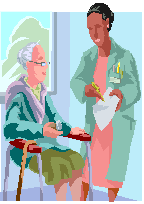
Suggestions for Addressing Relationship Issues:
- Help families talk about the changes they feel.
- Include the individual in decision-making process as much as possible.
- Encourage openness with friends and talk about the changes taking place.
The New York State Office for the Aging website contains valuable information for patients and their families. For more information on Alzheimer's disease, family support groups and assistance on finding the local Office of the Aging near you, go to www.aging.ny.gov
Source: The Alzheimer's Association's website www.alz.org.
The Alzheimer's Association of Northeastern New York's website, www.alzneny.org .
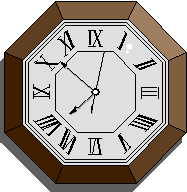
MANDATORY GENERIC
PROGRAM REMINDERS
Return to Table of Contents
GRANDFATHERING TO END...
Prescriptions for brand-name drugs that have an "A" rated generic equivalent ordered prior to November 17, 2002 did not require prior authorization for the life of that prescription. These prescriptions were "grandfathered" for six months.
It is important to remember that when a new prescription for a brand-name drug with an "A" rated generic equivalent is issued to the patient, it will require a prior authorization.
The generic equivalent of the brand-name drug does not require prior authorization.
If you have any questions regarding this article, you may contact the Pharmacy Policy and Operations Unit at (518) 486-3209.
FAMILY PLANNING BENEFIT PROGRAM
Reminder Of Claim Requirements
For Participating Providers
Return to Table of Contents
The New York State Department of Health (DOH) implemented the Family Planning Benefit Program (FPBP) effective October 1, 2002. This program provides Medicaid coverage for family planning services to all persons of childbearing age with incomes at or below 200% of the federal poverty level.
To insure claim payment, the following is required:
- Appropriate family planning diagnosis codes in the V25 series must be used when that information is required on the claim form.
- The family planning field on the claim form should be completed to indicate a family planning service has been provided. This applies to all providers billing for family planning services. If the service provided is not related to family planning, it cannot be billed under the FPBP.
If you have any questions, you may contact the Bureau of Policy Development and Agency Relations at 518-473-2160.
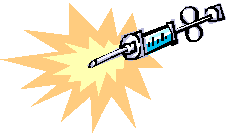
VACCINES FOR CHILDREN AND HIPAA
Return to Table of Contents
To become HIPAA compliant, the Medicaid program is changing the way physicians and nurse practitioners obtain reimbursement for routine childhood vaccine cost under the Vaccine for Children (VFC) Program.
For any VFC covered claim that has a date of service on or after July 1, 2003, the provider must add the new modifier "-SL" to the vaccine procedure code in order to be reimbursed by Medicaid. Failure to add this modifier will result in the denial of the claim.
The Medicaid program currently has arrangements that allow the provider to bill for the cost of VFC covered vaccines when purchased supplies are being depleted by using the modifier "-WD". This modifier will not be valid for any VFC covered claim that has a date of service after June 30, 2003 and the Medicaid program will no longer reimburse for the cost of supplies.
There are no other changes to billing Medicaid for VFC covered vaccines at this time.
Information regarding the Medicaid program and the VFC program may be found in the appropriate MMIS provider manuals.
Please address questions about how to bill the Medicaid program for VFC covered vaccines administered to Medicaid patients through the age of 18 years old to the Practitioners Unit, Computer Sciences Corporation, at (800) 522-5518.
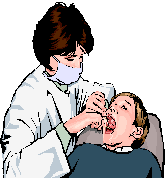
2003 DENTAL FEE SCHEDULE
Return to Table of Contents
There was a typographical error in the Medicaid Dental Fee Schedule, distributed in March as an update to the MMISDental Provider Manual. The first code at the top of page 5-17 should read "D5925 - Facial augmentation implant prosthesis".
In addition, all dental services with a service date of April 1, 2003 or after must be billed with a "D" code, with one exception. Claims against prior approvals with expiration dates up through 3/31/04 and containing dental procedure codes with the "0" must contain the same "0" procedure code on the claim form for dates of service within the approved period of service on the prior approval.
Please address questions to the Bureau of Medical Review and Payment, Dental Prior Approval/Pend Unit at (800) 342-3005, option 3.
NEW MANAGED CARE SPECIAL NEEDS PLAN
NOW AVAILABLE IN NEW YORK CITY
Return to Table of Contents
Effective May 1, 2003, Medicaid recipients residing in New York City will have the option to enroll in a new Special Needs Managed Care Plan, Healthfirst PHSP, referred to as OH-Healthfirst PHSP SN. Providers should make note of this new code in their MMIS Provider Manual under the heading "Recipient Other Insurance Codes". Enrollees can call the New York Medicaid CHOICE Helpline at (800) 505-5678 to find out more about Special Needs Plans (SNPs).
This article explains under what circumstances you may continue to provide services to the SNP enrollee and bill MMIS, versus when you must refer the recipient to the SNP to receive services.
Providers must check the eMedNY Medicaid Eligibility Verification System (MEVS) prior to rendering services to determine the recipient's eligibility and the conditions of Medicaid coverage:
- If the Medicaid recipient is enrolled in a SNP, the message will read "Eligible PCP".
- To determine if you can bill MMIS, you must read beyond this message for the insurance and coverage codes, which identify the SNP and the services covered by the respective SNP.
Please note that the MEVS coverage codes are general service categories, and do not necessarily mean that a SNP covers all services within the category.
You can bill MMIS and receive payment for any Medicaid services not covered by the SNP.
If you believe that the service is covered by the SNP, you must refer the recipient to the SNP for that service. If, at any time, you are unsure whether or not to provide a service, call the SNP prior to providing the service.
The following chart describes the MEVS messages related to the Medicaid services not covered by the Healthfirst SNP (therefore, the provider may bill MMIS), and information to assist you in contacting the SNP or local district.
| MEVS Message | Special Needs Managed Care Plan | Medicaid Services not Covered by SNP (bill MMIS) include:* | SNP/County Contact |
| OH- AINPQRTVYZ | Healthfirst PHSP SN | Pharmacy, dental, methadone maintenance, COBRA case management, HIV resistance tests, AIDS adult day health care, personal care agency services, residential health care facilities, outpatient clinic chemical dependence treatment (alcohol and substance abuse) except outpatient detoxification | Healthfirst PHSP SN (888) 801-1660 NYC HRA Renee Stout (212) 643-3383 |
* Please contact the health plan above for additional SNP benefit package information.
If you have questions on how to interpret the MEVS message or need further general eligibility clarification, you should call Provider Services at (800) 343-9000
If you have billing questions, you may contact Computer Sciences Corporation (CSC) at the following numbers:
Practitioner Services (800) 522-5518, Institutional Services (800) 522-1892, Professional Services (800) 522-5535
MORE INFORMATION ON SPECIAL NEEDS PLANS
Return to Table of Contents
Mental Health Providers: SSI/SSI-related recipients enrolled in SNPs will have mental health services covered by the SNP.
Currently, SSI/SSI-related recipients enrolled in Medicaid managed care plans have mental health services carved out from the benefit package. An "S" is indicated on the MEVS for these SSI/SSI-related recipients when a provider conducts a current day eligibility verification. Providers have been historically advised to bill MMIS directly for mental health services for these recipients.
This policy will change for SSI/SSI-related enrollees in SNPs. For SSI/SSI-related SNP recipients, mental health services are covered by the plan. Providers are advised that for specific plan ("OH" Healthfirst) mental health services are the plan's responsibility when a recipient is indicated as SSI ("S") on the MEVS.
An exception is made for some SSI children in the SNPs. Consistent with mainstream managed care for SSI recipients, mental health benefits for some SSI children will be carved out of the benefit package. Please check with the plan to determine the status of these children.
Chemical Dependency (Alcohol and Substance Abuse) Providers SSI/SSI-related recipients enrolled in SNPs will have inpatient chemical dependency services covered by the SNP.
Currently, SSI/SSI-related recipients enrolled in Medicaid managed care plans have inpatient and outpatient treatment and rehabilitation chemical dependency (alcohol and substance abuse) health services carved out from the benefit package(except for detoxification services, which are included in the managed care benefit package). An "S" is indicated on the MEVS for these SSI/SSI-related recipients when a provider conducts a current day eligibility verification. Providers have been historically advised to bill MMIS directly for inpatient and outpatient chemical dependency (alcohol and substance abuse)services for these recipients.
This policy will change for SSI/SSI-related enrollees in SNPs. For SSI/SSI-related SNP recipients, inpatient chemical dependency (alcohol and substance abuse) services are covered by the plan. Providers are advised that for the specific plan ("OH" Healthfirst) inpatient chemical dependency services are the plan's responsibility when a recipient is indicated as SSI "S") on the MEVS.
An exception is made for some SSI children in the SNPs. Consistent with mainstream managed care for SSI recipients, inpatient and outpatient treatment and rehabilitation chemical dependency (alcohol and substance abuse) benefits for some SSI children will be carved out of the benefit package (except for detox services which are included in the managed care benefit package). Please check with the plan to determine the status of these children.
Questions regarding this article can be directed to the Department of Health at (518) 486-1383.
CHANGE IN REIMBURSEMENT FOR PART-TIME CLINICS
Intermediate Care Facilities, Community Residences and
Individualized Residential Alternative Providers
Return to Table of Contents
Effective June 1, 2003, Article 28 licensed facilities may not receive Medicaid reimbursement for part-time clinics operated in Intermediate Care Facilities for the Developmentally Disabled (ICF/DDs) certified by the Office of Mental Retardation and Developmental Disabilities (OMRDD). This applies to all ICF-based part-time clinics.
Payment for part-time Article 28 clinics operating in OMRDD certified Individualized Residential Alternatives (IRAs) and Community Residences (CRs) will be prohibited effective October 15, 2003. Providers are required to submit closure plans well in advance of this date to allow for approval by the Department of Health Office of Health Systems Management (OHSM).
For questions on this policy, please call the Bureau of Policy Development and Agency Relations at (518) 473-2160.
For questions on part-time clinic licensure, please call OHSM at (518) 402-0911.
IMPORTANT BILLING INSTRUCTIONS FOR
ARTICLE 16 CLINIC PROVIDERS
Return to Table of Contents
This article provides claims submission instructions for Office of Mental Retardation and Developmental Disabilities (OMRDD) Article 16 clinic services delivered after March 15, 2003. For all clinic services, except intake visits, the "Servicing/referring ID" field (data element 85-12) must be completed as follows:
- If Article 16 clinic services are delivered by a licensed professional, the "Servicing/referring ID" field must be completed with the State Education (SED) license number for the professional delivering the service. The "license type code" field is completed with the appropriate license type code.
- If Article 16 clinic services are delivered by a student-in-training practitionerunder the direct supervision of a SED licensed practitioner , the "Servicing/referring ID" field must be completed with the SED license number for the professional supervising the service. The "license type code" field is completed with the appropriate license type code.
- If Article 16 clinic services are delivered by an Applied Behavioral Sciences Specialist as defined in NYCRR §679.99 (t), the "Servicing/referring ID" field must be completed with the SED license number for the licensed psychologist supervising the service. The "license type code" field is completed with the appropriate license type code.
- If Article 16 clinic services are delivered by a rehabilitation counselor, the "Servicing/referring ID" field must be completed with "unlicensed practitioner number". When using the unlicensed practitioner number the license type code field is left blank.
When intake visits are delivered by licensed professionals, the "Servicing/referring ID" field should be completed with the licensed professional's SED license number. When intake visits are delivered by authorized clinic employees who are not licensed professionals, the "Servicing/referring ID" field should be completed with "unlicensed practitioner number" and the license type code field is left blank.
Note that OMRDD is monitoring the use of the unlicensed practitioner number on Medicaid claims to ensure that it is being used only for rehabilitation counseling services and intake visits delivered by unlicensed staff.
For additional information on clinic claim submissions and a list of license type codes, please refer to the June 2002 Medicaid Update. Requests for this edition can be made via email at:
Any questions concerning this matter should be directed to Mr. Wake Gardner of the OMRDD Revenue Systems Unit at (518) 402-4333.
Recipient Name Search/Check Amount Inquiry Line
New Telephone Number!
Return to Table of Contents

Due to the upgrade and relocation of equipment, the telephone number for the Recipient Name Search and Check Amount Inquiry will change.
Effective April 2003,
the number has changed from the current (518) 473-4620 to:
(518) 472-1550.
The Medicaid Update: Your Window Into The Medicaid Program
The State Department of Health welcomes your comments or suggestions regarding the Medicaid Update.
Please send suggestions to the editor, Timothy Perry-Coon:
NYS Department of HealthOffice of Medicaid Management
Bureau of Program Guidance
99 Washington Ave., Suite 720
Albany, NY 12210
(e-mail MedicaidUpdate@health.state.ny.us )
The Medicaid Update, along with past issues of the Medicaid Update, can be accessed online at the New York State Department of Health web site: http://www.health.state.ny.us/health_care/medicaid/program/main.htm